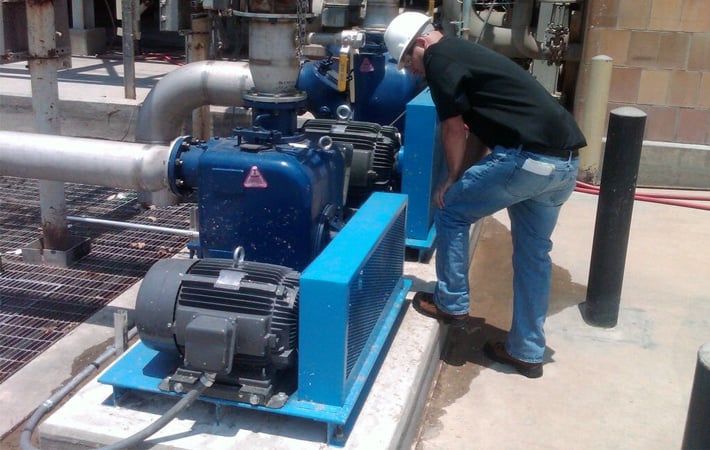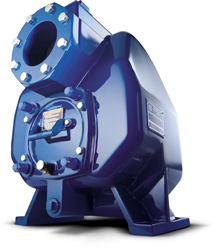

Discover why your self-priming pump isn't priming. Crane Engineering, a leading fluid processing solutions distributor of industrial pumps and valves in Wisconsin, Minnesota, and Upper Michigan, offers expert diagnosis and solutions. Contact us today for a personalized quote for your industrial pump and valve needs.
Self-priming centrifugal pumps are unique. As the name suggests, they can prime themselves under suction lift conditions. They draw fluid up from tanks or pits below, making them easier and safer to work on than those that work below ground. Under the right conditions, they’ll free themselves of entrained gas and function normally on their own, but sometimes, they can’t.
A BRIEF NOTE OF CAUTION: Just because self-priming pumps are able to pull fluid into them, doesn’t mean that they should start up dry. Self-priming, centrifugal pumps need fluid in the casing to get started. Running dry, even for a short while, will cause damage to the mechanical seal, and pump failure.
Once the pump is turned on, the impeller begins to turn in a counterclockwise rotation. The fluid inside, or the “initial prime”, flows through the volute into the discharge cavity. Here, the air and fluid separate, the air evacuates through an open-ended line, or air release line, while the fluid returns to the impeller through a recirculation port.
While the fluid is recirculated and the air is removed from the discharge cavity, low pressure is being created at the eye of the impeller. Atmospheric pressure is higher than the lower pressure created at the eye of the impeller, thus fluid is forced up the suction line.
As fluid moves up the suction line, the air ahead of the fluid is pushed into the casing and handled as the initial prime was handled through the recirculation process. Once the fluid arrives in the pump, it operates as normal.
This video from Gorman-Rupp does a great job showing how a self-priming pump works.
That’s how it’s supposed to work. If that’s not the case for you, here are some reasons why your self-priming pump might not prime.
As fluid recirculates in the pump and forces air out of the discharge chamber, it’s trying to create an area of low pressure. However, if there’s a leak in the suction line, air continues to be drawn into the pump, never allowing it to release enough to create that area of low pressure.

If the eye of the impeller is plugged with debris, it removes the hydraulic capability of the impeller to create an area of low pressure.
A pump can become air-bound if it experiences any of these conditions:
During the priming process, as discussed above, fluid is recirculated through the volute casing. If the recirculation port becomes plugged, the eye of the impeller is unable to create an area of low pressure in which to pull liquid up the suction line.
The ability for self-priming pumps to prime hinges on all the right conditions. The pump must be able to evacuate air from inside the pump, create a low-pressure area at the eye of the impeller, and also be properly sized for the right NPSH conditions.
Engineers and experts rely on Crane Engineering for insight and help with centrifugal pumps and positive displacement pumps. Our in-house team of engineers can answer questions related to industrial pumps, valves, and skid systems. We provide a complete service and repair team that will fix pumps back to OEM standards. We are ready to assist you if you're in Wisconsin, Minnesota, Iowa, North Dakota, South Dakota, and the Upper Peninsula of Michigan. Crane Engineering also builds and designs customized skid systems nationwide so contact us, today!
Let us know how we can help you, request a quote today!
These Stories on Pumps
Headquarters and Service Center
Located outside Green Bay, WI
707 Ford Street
Kimberly, WI 54136
920-733-4425
OptiFlow Design and Build Center
1002 Truman Street
Kimberly, WI 54136
920-733-4425
Burnsville Service Center
12265 Nicollet Avenue
Burnsville, MN 55337
952-444-1949
Grand Rapids Service Center
26489 Industrial Blvd
Cohasset, MN 55721
952-444-1949
© Copyright 2024. Crane Engineering. All Rights Reserved. Privacy Policy.